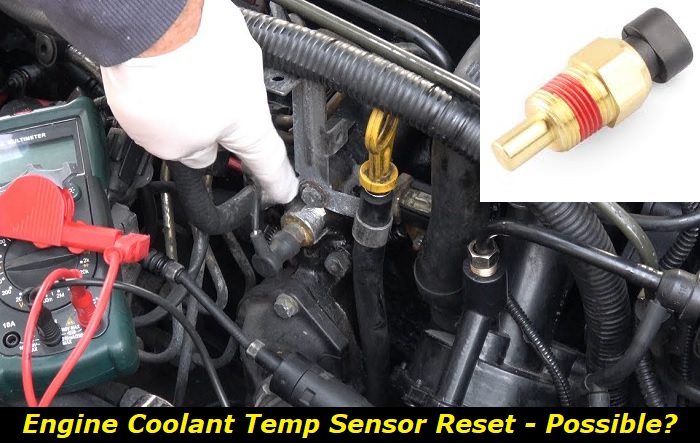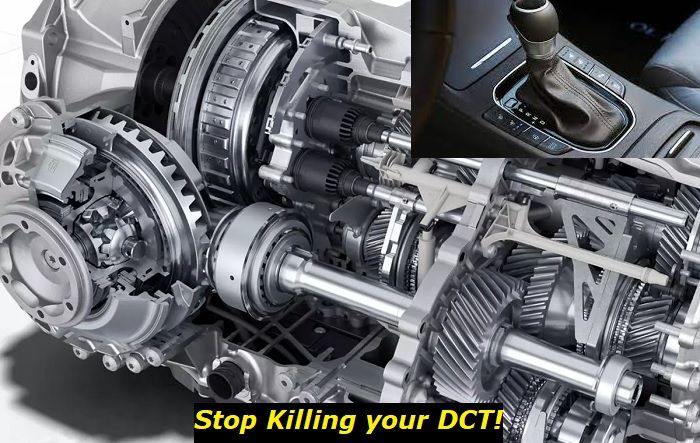You will not need to reset the coolant temp sensor in your engine manually because it's going to be done automatically by the ECU each time you start the engine or even turn the ignition. So, everything you read on the internet about this reset procedure is just not true and makes you do some unnecessary moves.
Engine sensors problems highlights
- DIY repairs:possible
- Tools needed:scanner,basictools
- Commonreasons:sensor problems, electric supply issues, software glitches
- Time to repair:1 - 2.5 hours
- Price for parts:$50 - $250
- Can you drive?In most cases, yes
- Alternative solutions:bypassing, driving in limp mode, roadside assistance

What's the coolant temp sensor?
This is essentially the unit that changes its resistance under different temperatures. The higher the temperature, the lower resistance. Then it sends the information about its current resistance to the ECU and it makes any conclusions about the engine temperature. This is all. So, basically, it's a resistor that changes its resistance under certain temperatures.
What exactly are you going to reset in this unit? This is not something that has its own brain or control module, so it's impossible to reset. Sometimes, the sensor may malfunction, and turning the engine on and off may "reset" it and get back to normal. But the manual reset procedure that is described on so many car blogs and websites makes me laugh.
So, here's how the coolant temp sensor works:
- when you turn on the ignition, the ECU sends a 5-volt current to the sensor;
- the sensor is immediately activated and starts working;
- depending on the temperature of the coolant, it sends certain resistance parameters to the ECU;
- ECU makes its calculations and adjusts all the needed settings;
- once the engine coolant temperature changes, the sensor sends new signals and the ECU recalculates everything immediately;
- if something goes wrong and the readings are improper, you may see the check engine light and there will be an error code in the ECU.
This is how it works. Resetting the engine coolant temperature sensor may now sound weird to you and I hope you understand that there is basically nothing to reset.
I've seen ridiculously many guidelines offering readers to connect the multimeter to the sensor and send 5 volts to it or to use a battery with exactly a 5-volt current. But this is exactly what ECU does every time you turn on the ignition - it just sends 5 volts to the sensor to activate it.
When may you want to reset the engine temp sensor?
I'm unsure why people ask this so often, so I decided to ask them why they needed this. And the answers were very diverse. While some just wanted to do it because they heard it's needed regularly, some other guys told me that they want to try and get the dead sensor back to life. But gosh, it's not a human heart and your multimeter is not a resuscitator!
Here are some of the most common reasons:
- One of the ideas is that you may need to reset this sensor when the readings of engine temperature are inadequate. But this may only mean that the engine temp sensor is not working properly.
- Another common reason is that some people told you that resetting the engine coolant temp sensor is important after every maintenance procedure. This is not true.
- Also, you may want to reset the temperature sensor after you change the coolant in your vehicle. This also doesn't make sense because it doesn't affect the sensor in any way.
- One more thing that may make you read those guides on resetting the temp sensor is that you just installed the new sensor. But don't worry, the ECU will do this job for you.
I've got dozens of other answers but these were the most common ones. And I need to tell you that all of them just don't make sense. You started worrying because you heard someone say that engine temp sensors need to be reset regularly. Just open the driver's manual that your dealer should have given you with the new car (or find it online) and see if this is true. I'm pretty sure no manual in the world will tell you about the coolant temp sensor reset.
So why should you worry?
Engine coolant temperature reset check
You may say, OK, Dmitry, I got your point but I still want to check this sensor and make sure that it's working properly. Well, this is a more reasonable wish and I can obviously help you with this. Although I always recommend doing this kind of job with the help of mechanics, you may risk a little and do it on your own.
Here's how you can test the coolant temp sensor in your vehicle:
- Open the hood and let the engine cool down a bit if you've just stopped driving it.
- Then locate the temperature sensor - usually on the passenger side of the engine bay, right in the block, or near the thermostat of your engine.
- Take the connection off the sensor to have access to its electrical part.
- Drain some coolant from your cooling system to avoid leaks. I won't describe this, please find the manual on how to do it.
- Take the engine coolant temp sensor off the vehicle.
- Prepare a cup with water and heat it exactly to 33 degrees Fahrenheit.
- Connect your multimeter to the sensor - choose two of the contacts located opposite each other.
- Set the multimeter to DC and... OK, wait, you will not want to continue.
Why did I stop? Because, at this point, you will need some source of 5-volt current to give life to your sensor, and then you will need to know how to measure the resistance. The majority of simple guides I've seen on how to check the temp sensor from a car engine are just written by strange guys that haven't seen a sensor in their lives.
Now you may understand that checking a sensor, resetting it, or replacing this thing is something you will not want to do on your own. Better let professionals do this job.
Symptoms of a faulty engine temperature sensor
Unfortunately, the coolant temp sensor is not only showing the engine temperature on your dash. It also works to set up the ECU to optimal air-fuel mixture, helps it solve some emissions problems, adjusts the RPM when you cold-start the engine, etc. So, its readings are so important that it's very hard to overlook when this sensor fails.
Here are some of the key symptoms of the coolant temp sensor failure:
- high or low idle speed when you start the engine - this is the first symptom that develops because the sensor just doesn't send good readings to the ECU;
- bad smell from the pipe - it may happen because the air-fuel mixture is too rich and is not adjusted properly according to the engine temperature;
- check the engine light and also the P0118 code (the code may change for different models and brands) in the ECU;
- the engine temp gauge needle doesn't move or reads something weird - this also tells you about the problem with the coolant temp sensor;
- the engine is running on high RPM after being heated properly - this may also mean that it went to limp mode.
The readings of the coolant temperature sensor are extremely important. They direct the ECU and allow it to set up the proper work of all components to make sure everything is good and efficient. Without the proper readings from the sensor, the engine will consume more fuel, work harshly, and lose its efficiency.
What should you do if the coolant temp sensor is broken?
If you expect to see another manual on how to replace the coolant temperature sensor, I'm sorry but no. This deserves another full article and I fairly don't think you will want to do this on your own. First of all, the location of the sensor is not really clear in some cars. Also, you will need to drain some coolant which may be a problem. Another problem is that finding the proper coolant temp sensor may be challenging.
I don't recommend any DIY work in this case because you may bring more harm than good. Any mistake with the engine coolant temp sensor may lead to fatal damage to the engine. For example, you may not see when the engine is overheated and it will fail because of this. But before that, your engine will go mad in all possible ways.
I may have been a little too direct in this article and it's not like all other articles in this blog. And I'm sorry for that. But you also need to understand that such manipulations as engine coolant temp sensor checks and replacement should always be conducted by professionals.
About the authors
The CarAraC research team is composed of seasoned auto mechanics and automotive industry professionals, including individuals with advanced degrees and certifications in their field. Our team members boast prestigious credentials, reflecting their extensive knowledge and skills. These qualifications include: IMI: Institute of the Motor Industry, ASE-Certified Master Automobile Technicians; Coventry University, Graduate of MA in Automotive Journalism; Politecnico di Torino, Italy, MS Automotive Engineering; Ss. Cyril and Methodius University in Skopje, Mechanical University in Skopje; TOC Automotive College; DHA Suffa University, Department of Mechanical Engineering






Add comment